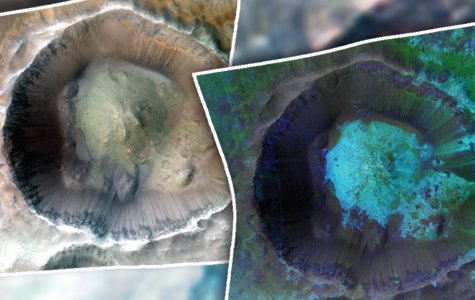The best place to look for signs of past life on Mars may be underground.
Abundant liquid water might have existed at the surface of the red planet for only brief periods of time. That's according to a new interpretation of the distribution of various clay minerals measured by European and NASA orbiters at more than 350 sites on Mars. The new analysis, which appears in the journal Nature, suggests that warm water may have stayed mostly confined to the planet's shallow subsurface for hundreds of millions of years.
"If surface habitats were short-term, that doesn't mean we should be glum about prospects for life on Mars," says Bethany Ehlmann, assistant professor of planetary science at Caltech, scientist at the Jet Propulsion Laboratory, and lead author of the article, "but it says something about what type of environment we might want to look in. The most stable Mars habitats over long durations appear to have been in the subsurface."
To read the full release from the Jet Propulsion Laboratory, click here.
 Investigation of exposed clay minerals at thousands of martian sites by the Compact Reconnaissance Imaging Spectrometer for Mars (CRISM) on NASA's Mars Reconnaissance Orbiter: Infrared light indicates terrains of different composition in the false-color infrared image of a crater on Mars (left). Iron-magnesium clays in the same location are mapped in blue (right). These common clays on Mars are beneath unaltered volcanic layers that contain the mineral olivine, shown in green.
Credit: NASA/JPL-Caltech/JHUAPL
Investigation of exposed clay minerals at thousands of martian sites by the Compact Reconnaissance Imaging Spectrometer for Mars (CRISM) on NASA's Mars Reconnaissance Orbiter: Infrared light indicates terrains of different composition in the false-color infrared image of a crater on Mars (left). Iron-magnesium clays in the same location are mapped in blue (right). These common clays on Mars are beneath unaltered volcanic layers that contain the mineral olivine, shown in green.
Credit: NASA/JPL-Caltech/JHUAPL

